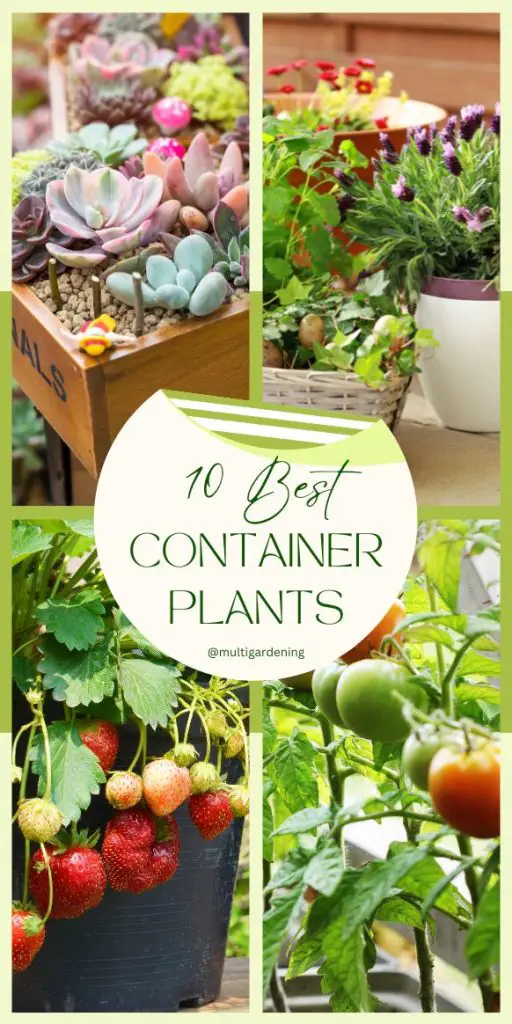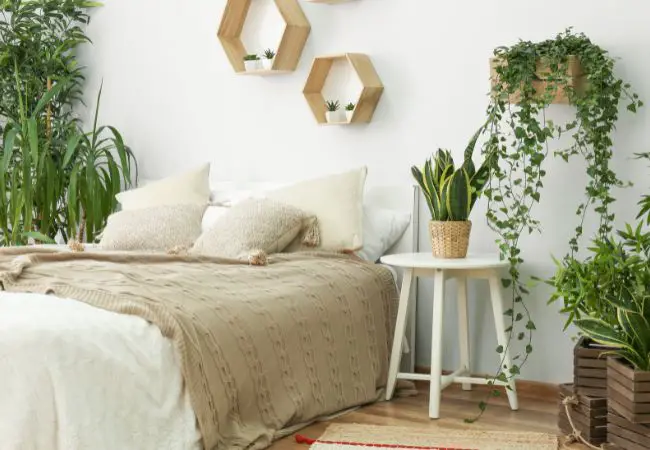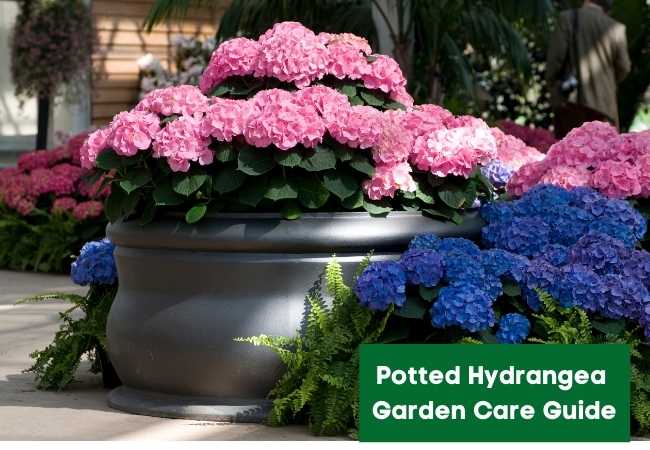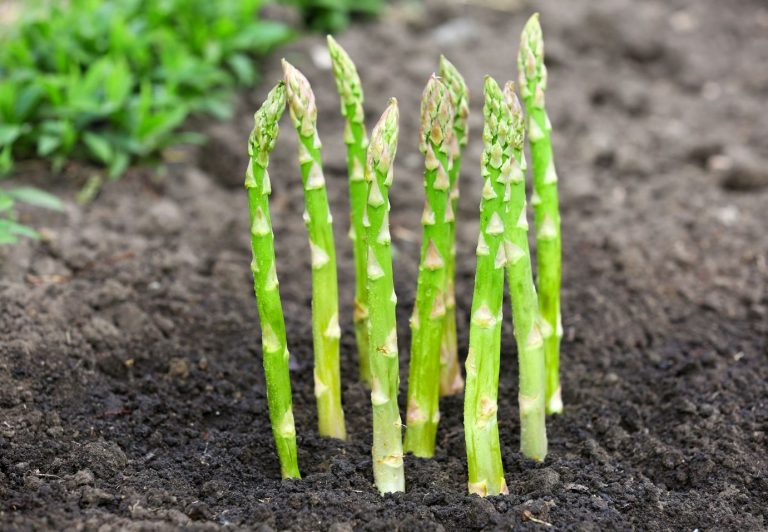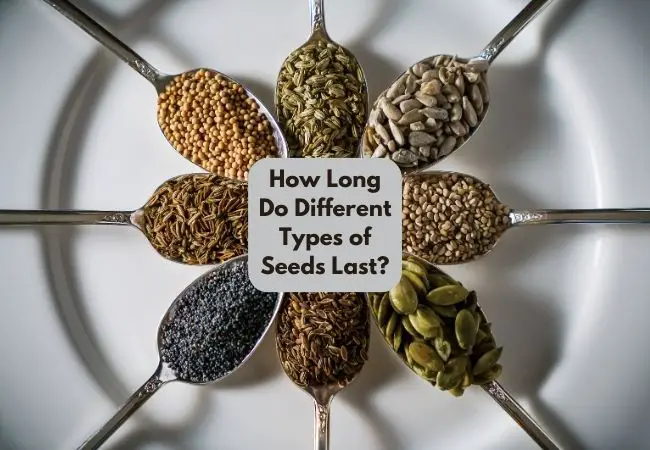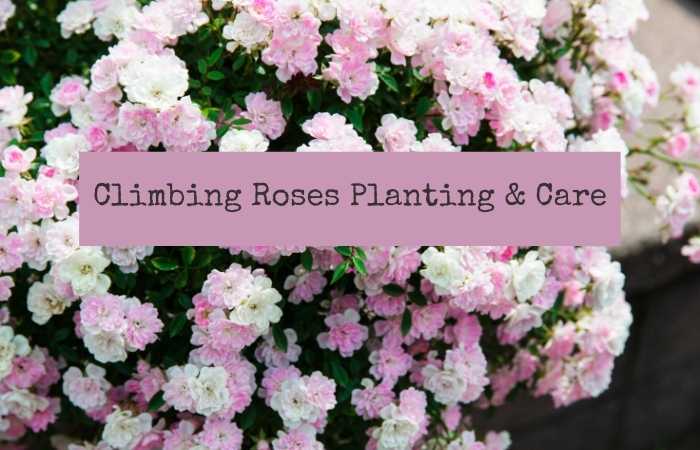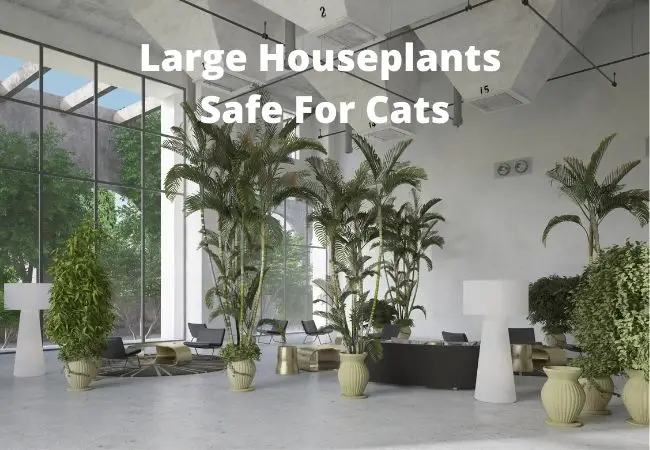10 Best Container Plants For Vibrant Gardens
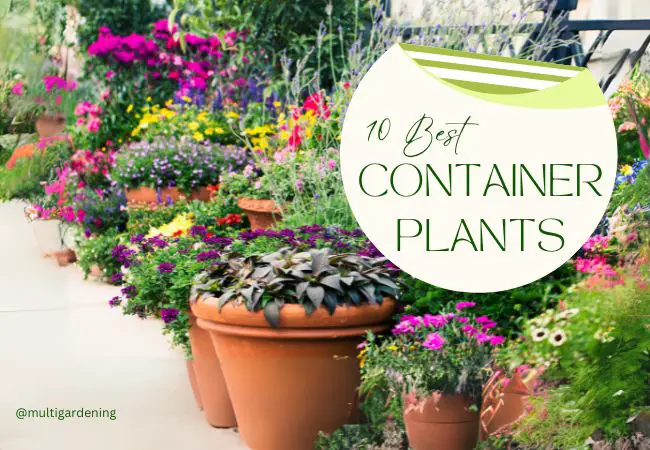
These are the best container plants for vibrant gardens. Container gardening has emerged as a popular solution for individuals with limited outdoor space.
Container Planting
Container planting offers a creative way to cultivate greenery and flowers on balconies, patios, and even windowsills. Selecting the appropriate plants for your containers is essential for ensuring their health and vitality.
In this post, I’ll explore ten of the best container plants, considering factors such as size, sunlight requirements, and maintenance needs, to help you create a thriving garden in confined spaces.
Factors to Consider When Choosing Container Plants
Before delving into specific plant selections, it’s crucial to understand the key factors that influence successful container gardening:
Container Size: Choose containers that provide ample room for plant roots to grow.
Larger containers hold more soil, which helps prevent rapid drying and provides better insulation against temperature fluctuations.
Sunlight Requirements: Consider the amount of sunlight your outdoor space receives throughout the day. Some plants thrive in full sun, while others prefer partial shade or full shade.
Watering Needs: Different plants have varying water requirements. Some prefer consistently moist soil, while others tolerate periods of dryness.
Understanding your plant’s watering needs is essential for maintaining healthy growth.
Climate Suitability: Select plants that are well-suited to your local climate conditions. Consider factors such as temperature extremes, humidity levels, and frost dates when choosing container plants.
Growth Habit: Pay attention to the mature size and growth habits of your chosen plants. Some species are compact and bushy, while others may vine or spread rapidly.
Best Container Plants
Now, let’s explore the top ten container plants that are well-suited for vibrant gardens in small spaces:
Dwarf Citrus Trees
Dwarf citrus trees, such as Meyer lemon, Key lime, and Calamondin orange, are excellent choices for container gardening.
These compact trees not only provide fresh, flavorful fruits but also offer fragrant blooms and attractive foliage.
When selecting a container for dwarf citrus trees, opt for one that is at least 18 inches in diameter to accommodate their root systems.
Place the container in a sunny location, such as a south-facing balcony or patio, and use a well-draining potting mix enriched with organic matter.
Water the citrus trees regularly, keeping the soil evenly moist but not waterlogged. Prune the trees as needed to maintain their shape and promote fruit production.
Succulents and Cacti
Succulents and cacti are ideal choices for low-maintenance container gardens, especially in arid or drought-prone regions.
These water-efficient plants come in a wide range of shapes, sizes, and colors, making them versatile options for adding visual interest to your outdoor space.
When planting succulents and cacti in containers, use a well-draining potting mix designed for cacti and succulents to prevent waterlogging and root rot.
Place the containers in a sunny location, such as a windowsill or balcony, where they can receive ample sunlight.
Water the plants sparingly, allowing the soil to dry out between waterings to prevent overwatering.
Petunias
Petunias are popular annual flowers prized for their prolific blooms and vibrant colors. These versatile plants are well-suited for container gardening, particularly when grown in hanging baskets, window boxes, or patio containers.
Choose from a variety of petunia cultivars, including Wave, Supertunia, and Surfinia, to suit your garden’s color scheme and design aesthetic.
When planting petunias in containers, use a high-quality potting mix enriched with organic matter to provide essential nutrients and promote healthy growth.
Place the containers in a sunny location, ensuring that the plants receive at least six to eight hours of sunlight per day.
Water the petunias regularly, keeping the soil evenly moist but not waterlogged, and deadhead faded blooms to encourage continuous flowering throughout the growing season.
Herbs
Herbs are not only culinary essentials but also attractive additions to container gardens, providing fresh flavors and aromatic scents.
Popular container herb choices include basil, rosemary, and thyme, which thrive in sunny locations with well-drained soil.
When planting herbs in containers, choose pots with ample drainage holes to prevent waterlogging and root rot.
Use a lightweight potting mix specifically formulated for herbs, or create your own by combining equal parts potting soil, perlite, and coarse sand.
Water the herbs regularly, allowing the soil to dry out slightly between waterings, and fertilize them monthly with a balanced liquid fertilizer to promote healthy growth.
Harvest the herbs frequently to encourage bushy growth and ensure a steady supply of fresh leaves for cooking. Best herbs that grow well together.
Geraniums
Geraniums are classic flowering plants prized for their colorful blooms and long-lasting performance.
These drought-tolerant plants are well-suited for container gardening, adding instant beauty to patios, balconies, and window boxes.
Choose from a variety of geranium types, including Zonal, Ivy-leaved, and Scented geraniums, each offering unique foliage textures and flower colors.
When planting geraniums in containers, use a well-draining potting mix enriched with compost to provide essential nutrients and promote healthy root development.
Place the containers in a sunny location, ensuring that the plants receive at least six hours of sunlight per day. Water the geraniums deeply but infrequently, allowing the soil to dry out between waterings to prevent root rot.
Deadhead spent blooms regularly to encourage continuous flowering throughout the growing season.
Ferns
Ferns are elegant foliage plants valued for their lush green fronds and graceful growth habit. These shade-loving plants thrive in containers, making them perfect choices for shady balconies, porches, and patios.
Popular container fern varieties include Boston fern, Maidenhair fern, and Kimberly Queen fern, each offering its own unique charm.
When planting ferns in containers, use a lightweight potting mix that retains moisture well, such as a blend of peat moss, perlite, and compost.
Place the containers in a shaded or partially shaded location, away from direct sunlight, to prevent leaf scorch and dehydration.
Water the ferns regularly, keeping the soil evenly moist but not waterlogged, and mist their foliage periodically to increase humidity levels and prevent drying out.
Tomatoes
Tomatoes are versatile vegetables that thrive in containers, making them ideal choices for small-space gardening.
Whether you prefer cherry tomatoes, patio tomatoes, or heirloom varieties, there are plenty of options to suit your taste and space requirements.
When planting tomatoes in containers, choose pots that are at least 18 inches in diameter to accommodate their root systems and provide ample room for growth.
Use a well-draining potting mix enriched with compost to provide essential nutrients and promote healthy root development. Place the containers in a sunny location, ensuring that the plants receive at least eight hours of sunlight per day.
Water the tomatoes deeply and consistently, keeping the soil evenly moist but not waterlogged, and fertilize them regularly with a balanced liquid fertilizer to promote robust growth and fruit production.
Support the tomato vines as they grow, using stakes, trellises, or cages to prevent them from sprawling and breaking under the weight of the fruit.
Lavender
Lavender is a fragrant perennial herb prized for its aromatic blooms and silvery foliage. This drought-tolerant plant is well-suited for container gardening, adding beauty and fragrance to patios, balconies, and outdoor seating areas.
Choose from a variety of lavender species and cultivars, including English lavender, French lavender, and Spanish lavender, each offering its own unique characteristics and growth habits.
When planting lavender in containers, use a well-draining potting mix that mimics the plant’s native soil conditions, such as a blend of sandy loam and gravel.
Place the containers in a sunny location, ensuring that the plants receive at least six to eight hours of sunlight per day. Water the lavender sparingly, allowing the soil to dry out between waterings to prevent root rot.
Prune the plants regularly to maintain their shape and promote bushy growth, and harvest the flowers for use in potpourri, sachets, and culinary applications. Lavender growing guide.
Coleus
Coleus is a colorful foliage plant valued for its vibrant leaves and striking patterns. This shade-loving annual is well-suited for container gardening, adding visual interest to shaded patios, balconies, and garden beds.
Choose from a variety of coleus cultivars, including Rainbow Mixed, Kong, and Wizard, each offering its own unique leaf shapes, colors, and textures.
When planting coleus in containers, use a lightweight potting mix that retains moisture well, such as a blend of peat moss, perlite, and compost.
Place the containers in a shaded or partially shaded location, away from direct sunlight, to prevent leaf scorch and fading.
Water the coleus regularly, keeping the soil evenly moist but not waterlogged, and fertilize them monthly with a balanced liquid fertilizer to promote vigorous growth and vibrant foliage.
Pinch back the plants regularly to encourage branching and prevent them from becoming leggy, and propagate new plants from stem cuttings to expand your coleus collection.
Dwarf Fruit Trees
Dwarf fruit trees are compact varieties that are well-suited for container gardening, allowing you to enjoy fresh fruit harvests even in limited outdoor spaces.
Whether you prefer apple trees, peach trees, or fig trees, there are plenty of dwarf fruit tree options available to suit your taste and climate conditions.
When planting dwarf fruit trees in containers, choose pots that are at least 18 inches in diameter to accommodate their root systems and provide ample room for growth.
Use a well-draining potting mix enriched with compost to provide essential nutrients and promote healthy root development.
Place the containers in a sunny location, ensuring that the trees receive at least six to eight hours of sunlight per day.
Water the trees deeply and consistently, keeping the soil evenly moist but not waterlogged, especially during the growing season and fruit development stages.
Prune the trees regularly to maintain their shape and size, and protect them from frost damage by bringing them indoors or covering them with frost blankets during cold weather.
Final Thoughts
I love container gardening because it offers a versatile and practical solution for cultivating a wide range of plants in small outdoor spaces.
By selecting the right plants for your containers and providing them with proper care and maintenance, you can create a vibrant and thriving garden that enhances your outdoor living experience.
If you love gardening subscribe to our newsletter and also save the pin below to get new awesome gardening posts @multigardening.
